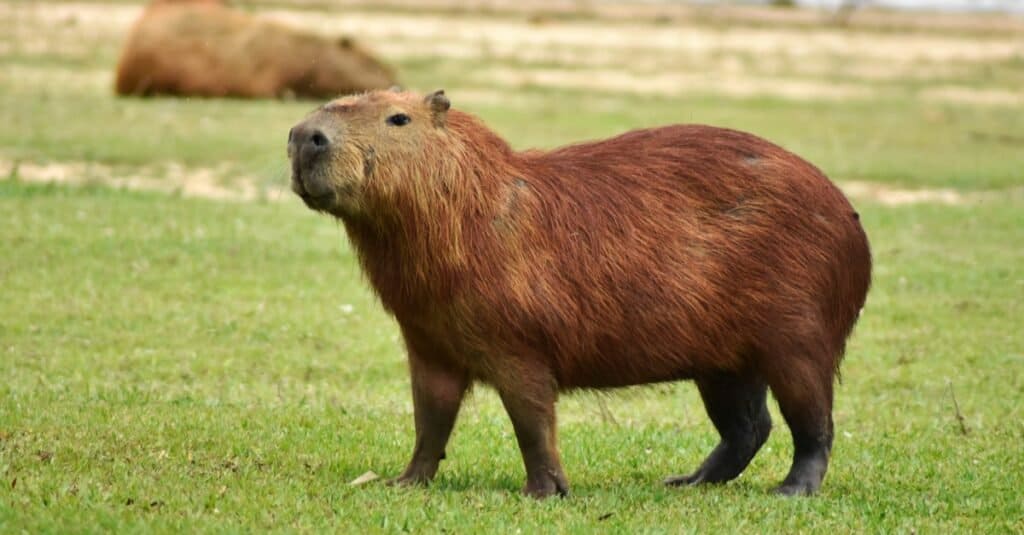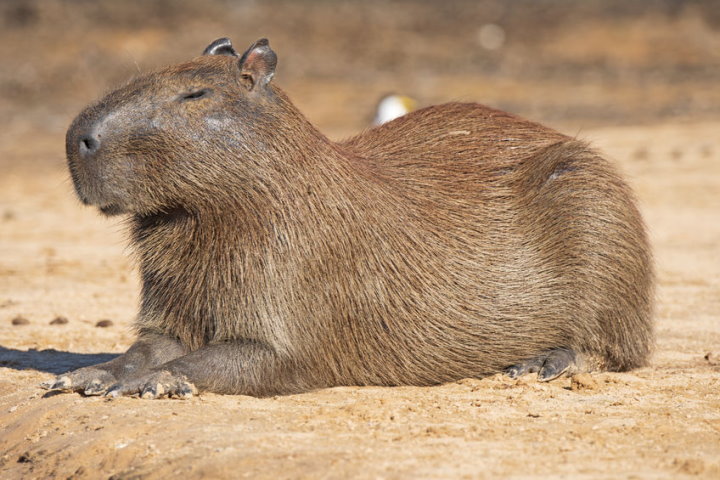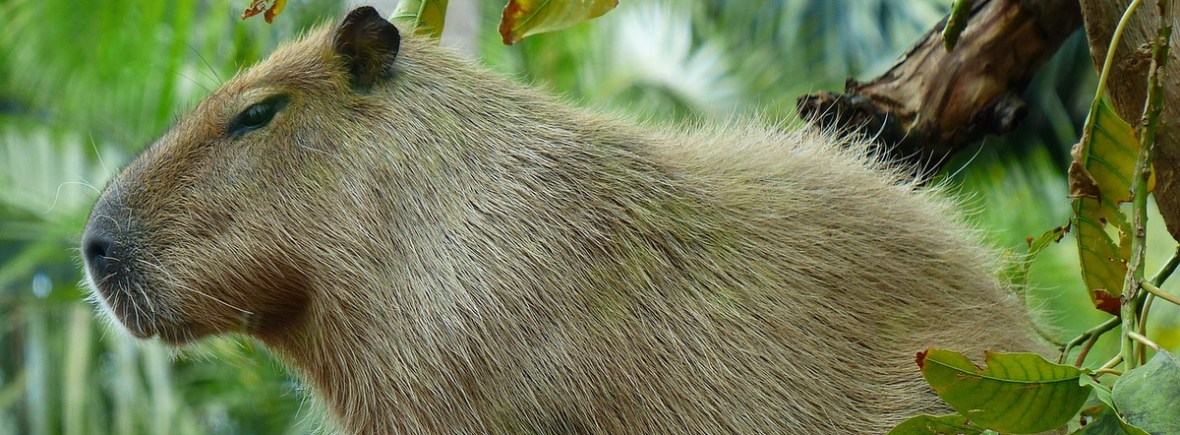If you’ve ever wondered where you can catch a glimpse of the world’s largest rodent, look no further! We’ve compiled a list of the top 10 places to spot capybaras in their natural habitat. From sprawling wetlands to tropical rainforests, these destinations offer unique opportunities to observe these fascinating creatures up close. Get ready to embark on an adventure and discover the best spots to see capybaras in all their glory.
1. Pantanal, Brazil

1.1. Description
The Pantanal, located in Brazil, is the largest wetland area in the world and serves as the perfect habitat for a variety of wildlife, including capybaras. This vast region stretches across the states of Mato Grosso and Mato Grosso do Sul, offering diverse landscapes of wetlands, savannahs, and forests. With its rich biodiversity, the Pantanal is known as a wildlife enthusiast’s paradise.
1.2. Best Time to Visit
The best time to visit the Pantanal to spot capybaras is during the dry season, which runs from May to October. During this period, the water levels recede, concentrating the wildlife around the remaining water sources. This makes it easier to observe and photograph the capybaras as they gather near the riverbanks and lagoons.
1.3. How to Get There
To reach the Pantanal, you can fly into either Cuiabá or Campo Grande, the capital cities of Mato Grosso and Mato Grosso do Sul, respectively. From there, you can arrange transportation to the specific Pantanal lodges, which are often located deep in the wetlands. It is recommended to book a guided tour or stay at one of the eco-lodges that offer wildlife viewing activities and expert guides to enhance your capybara spotting experience.
2. Los Llanos, Venezuela
2.1. Description
Los Llanos, situated in Venezuela, is a vast tropical grassland region known for its extraordinary wildlife. The area is characterized by expansive plains, savannahs, and seasonal wetlands, which provide ideal conditions for capybaras and many other species to thrive. In Los Llanos, you can witness a diverse ecosystem filled with capybaras, caimans, giant anteaters, and countless bird species.
2.2. Best Time to Visit
The best time to visit Los Llanos for capybara viewing is during the dry season, which typically spans from November to April. During this period, the floodwaters recede, and animals gather around the shrinking water sources, making it easier to spot capybaras in the open grasslands. Additionally, the reduced vegetation enables better visibility and increases the chances of witnessing wildlife interactions.
2.3. How to Get There
To access Los Llanos, you can fly into either Barquisimeto or Valencia, two major airports in Venezuela. From there, you can arrange transportation to the various haciendas and lodges located in Los Llanos. These accommodations often provide guided tours and excursions that allow you to explore the grasslands and observe capybaras up close. It is advisable to book your stay in advance to secure the best wildlife viewing opportunities.
3. Iberá Wetlands, Argentina
3.1. Description
The Iberá Wetlands in Argentina are a sprawling mosaic of marshes, lagoons, and floating islands. This expansive wetland ecosystem is home to abundant wildlife, including the charismatic capybara. In addition to capybaras, visitors to the Iberá Wetlands may encounter marsh deer, black caimans, and over 350 bird species, making it a true haven for nature lovers.
3.2. Best Time to Visit
The best time to visit the Iberá Wetlands is during the dry season, which lasts from May to September. During this period, the water levels decrease, attracting capybaras to the remaining water sources, such as lagoons and rivers. The cooler temperatures also make outdoor exploration more comfortable, allowing for prolonged wildlife spotting activities.
3.3. How to Get There
To reach the Iberá Wetlands, you can fly into Posadas, the capital city of the Misiones province in Argentina. From Posadas, you can travel by road to the town of Colonia Carlos Pellegrini, which serves as the gateway to the wetlands. Once there, you can arrange guided tours, boat rides, and nature walks that offer ample opportunities to observe capybaras and other wildlife in their natural habitat.
4. Osa Peninsula, Costa Rica

4.1. Description
The Osa Peninsula in Costa Rica is a biodiverse region teeming with tropical rainforests, pristine beaches, and mangrove swamps. This remote area is home to abundant wildlife, including the capybara. The Osa Peninsula boasts several nature reserves and national parks, making it an ideal destination for nature enthusiasts seeking an up-close encounter with these unique creatures.
4.2. Best Time to Visit
The Osa Peninsula is a year-round destination for spotting capybaras, but the dry season from December to April offers better visibility and improved wildlife sightings. During this time, the reduced rainfall minimizes the dense foliage, allowing for easier observation of capybaras along the riverbanks and in the surrounding grassy areas.
4.3. How to Get There
To reach the Osa Peninsula, you can fly into the Juan Santamaría International Airport in San José, Costa Rica’s capital. From there, you can take a domestic flight to either Puerto Jiménez or Drake Bay, two gateway towns to the Osa Peninsula. Alternatively, you can also reach the area by road, although this option may take longer. Once in the Osa Peninsula, you can join guided tours or visit the national parks where you’ll have the chance to spot capybaras in their natural habitat.
5. Llanos de Moxos, Bolivia
5.1. Description
Llanos de Moxos, located in Bolivia, is a vast floodplain that transforms into a wetland during the rainy season. This unique ecosystem is home to diverse wildlife, including capybaras. The Llanos de Moxos, also known as the Beni savannah, offers a glimpse into a pristine natural environment where capybaras can be spotted grazing along the grassy plains.
5.2. Best Time to Visit
The best time to visit the Llanos de Moxos is during the dry season, which extends from May to October. During this period, the floodwaters recede, leaving behind small pools and lagoons where capybaras congregate. The lack of dense vegetation and the relatively dry conditions make capybara spotting much easier, allowing visitors to witness these fascinating creatures in their natural habitat.
5.3. How to Get There
To reach the Llanos de Moxos, you can fly into the city of Trinidad, the capital of Bolivia’s Beni Department. From there, you can hire a local guide or join a guided tour that will take you to the Llanos de Moxos. These tours often include transportation, accommodations, and various activities to maximize your wildlife watching experience, including the chance to spot capybaras.
6. Hacienda Napoles, Colombia
6.1. Description
Hacienda Napoles, situated in Colombia, is a unique wildlife sanctuary that provides refuge to numerous animal species, including capybaras. This vast estate was once the infamous residence of drug lord Pablo Escobar but has since been transformed into an eco-park and conservation area. Visitors can now explore its lush landscapes and encounter capybaras in a safe and protected environment.
6.2. Best Time to Visit
Hacienda Napoles is open year-round, allowing visitors to spot capybaras at any time. However, the most favorable time to visit is during the dry season, which typically falls between December and March. During this period, the weather is generally sunny, and the water levels decrease, making it easier to observe capybaras as they graze along the lakeshores and in the surrounding grasslands.
6.3. How to Get There
To reach Hacienda Napoles, you can fly into the José María Córdova International Airport in Medellín, Colombia. From there, you can travel by road to Hacienda Napoles, which is located approximately three hours away. The eco-park offers various activities, including guided tours, animal encounters, and educational exhibits that allow visitors to learn more about capybaras and their natural habitat.
7. Parque Nacional Warairarepano, Venezuela

7.1. Description
Parque Nacional Warairarepano, also known as El Ávila National Park, is a natural oasis nestled in the outskirts of Caracas, Venezuela. This mountainous park is home to abundant wildlife, including capybaras, which can be spotted near the park’s rivers and streams. With its diverse hiking trails and breathtaking views, this park offers a unique opportunity to encounter capybaras in a natural setting.
7.2. Best Time to Visit
The best time to visit Parque Nacional Warairarepano for capybara sightings is during the dry season, which runs from December to April. During this period, the weather is generally drier, making it easier to explore the park’s trails and spot capybaras near the water sources. The moderate temperatures also contribute to a more enjoyable hiking experience.
7.3. How to Get There
To access Parque Nacional Warairarepano, you can fly into Simón Bolívar International Airport in Caracas, Venezuela’s capital. From there, you can take a taxi or public transportation to the park’s entrance. It is advisable to hire a local guide or join a guided tour to ensure a safe and informative visit. These tours often provide valuable insights into the flora and fauna, including the opportunity to observe capybaras up close.
8. Serra da Canastra, Brazil
8.1. Description
Serra da Canastra, located in Brazil, is a unique mountain range known for its picturesque landscapes and diverse wildlife. This region, encompassing the Canastra National Park, is home to numerous capybaras, which can be found in the park’s grasslands and near its natural springs. The rugged beauty of the Serra da Canastra makes it an ideal destination for nature enthusiasts seeking an up-close encounter with these charming creatures.
8.2. Best Time to Visit
The best time to visit Serra da Canastra for capybara spotting is during the dry season, which typically extends from May to September. During this period, the water sources become more scarce, leading capybaras to gather near the remaining springs and streams. The diminished vegetation also improves visibility, allowing visitors to witness these charismatic rodents as they graze and socialize.
8.3. How to Get There
To reach Serra da Canastra, you can fly into Ribeirão Preto Airport, located in the state of São Paulo, Brazil. From there, you can hire a car or join a guided tour that will take you to the Canastra National Park. Exploring the park independently is also possible, but it is recommended to obtain a map and seek advice from park officials to ensure a safe and successful capybara spotting experience.
9. Isla de Ometepe, Nicaragua
9.1. Description
Isla de Ometepe, situated in Lake Nicaragua, is a volcanic island that boasts stunning natural beauty and diverse wildlife. This unique destination offers the opportunity to observe capybaras in their natural habitat, especially near the island’s freshwater springs and on its sandy shores. Exploring Isla de Ometepe allows for a tranquil and immersive capybara spotting experience.
9.2. Best Time to Visit
The best time to visit Isla de Ometepe for capybara sightings is during the dry season, which typically spans from December to April. During this period, the weather is generally sunny, and the reduced precipitation allows for easier exploration of the island’s trails and beaches. The freshwater springs attract capybaras, providing excellent opportunities for observing and photographing these fascinating creatures.
9.3. How to Get There
To reach Isla de Ometepe, you can fly into Augusto C. Sandino International Airport in Managua, Nicaragua’s capital. From there, you can travel by road to the port of San Jorge, where ferries and water taxis depart for Isla de Ometepe. Once on the island, you can rent a bicycle or hire a local guide to explore the various natural attractions and spot capybaras along the way.
10. Carara National Park, Costa Rica

10.1. Description
Carara National Park, located in Costa Rica, is a biologically diverse nature reserve renowned for its impressive population of capybaras. Nestled between the dry forests of the northwest and the rainforests of the southwest, this park showcases a unique blend of ecosystems that supports a wide variety of wildlife, including capybaras. Exploring Carara National Park offers a chance to witness these fascinating creatures in their natural habitat.
10.2. Best Time to Visit
The best time to visit Carara National Park for capybara spotting is during the dry season, which typically runs from December to April. During this period, the reduced rainfall makes hiking through the park more manageable. The capybaras can often be seen near the park’s rivers, where they gather to drink and cool off, making it the perfect opportunity to observe them up close.
10.3. How to Get There
To access Carara National Park, you can fly into Juan Santamaría International Airport in San José, Costa Rica’s capital. From there, you can drive or take a scheduled bus to the town of Tarcoles, which serves as the gateway to the park. Guided tours are available at the park entrance, providing insightful information about capybaras and facilitating optimal viewing opportunities within the park’s boundaries.
In conclusion, these top 10 places across Central and South America offer incredible opportunities to spot capybaras in their natural habitats. Whether it’s the expansive wetlands of the Pantanal in Brazil, the tropical grasslands of Los Llanos in Venezuela, or the diverse ecosystems of Carara National Park in Costa Rica, each destination provides a unique experience to connect with these fascinating creatures. To make the most of your capybara spotting adventure, remember to choose the best time to visit, consider guided tours or accommodations with wildlife viewing activities, and always respect the animals and their habitats. Happy capybara spotting!



